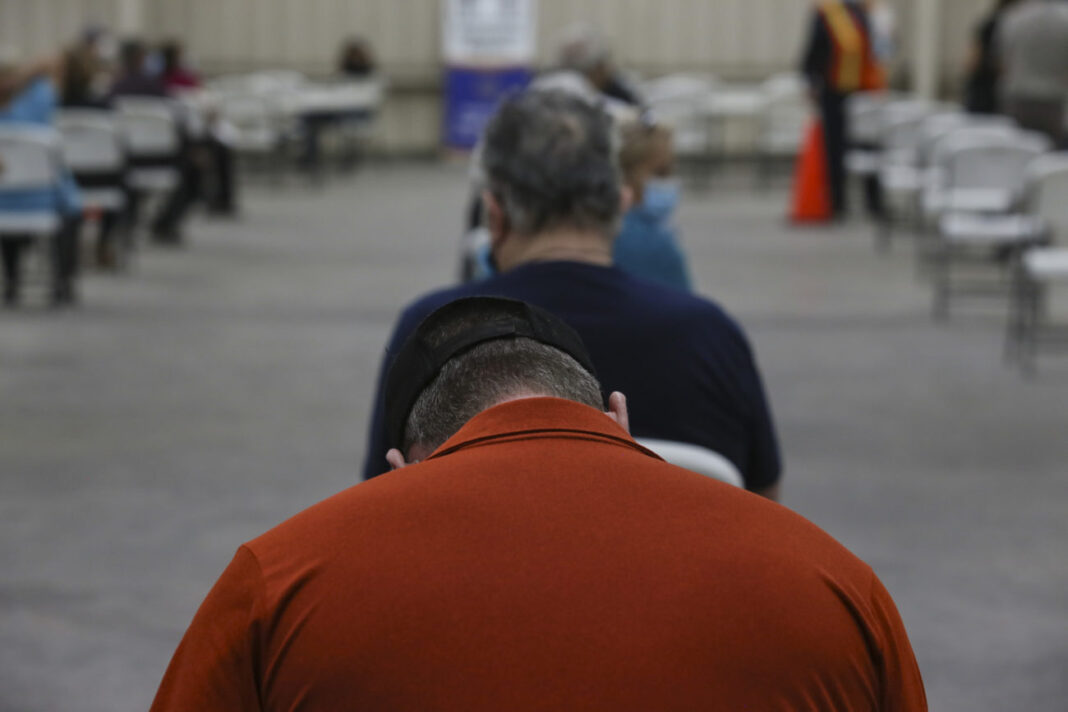Early in the COVID-19 pandemic, the hope was that when a vaccine was available and enough people got it, the United States would reach a state of herd immunity, leading to the eradication of the deadly virus.
Now that appears unlikely, experts say, thanks in large part to a high incidence of “vaccine hesitancy,” as health experts call it, among a sizable portion of the U.S. population. These are people who refuse to get vaccinated for whatever reason, or at the very most get one shot of a two-dose vaccine but skip the second one.
If that’s indeed the case, then rather than stamping out COVID-19 and its variants the world will have to live with them, just as various strains of influenza are a fact of life — as are annual flu shots for those who would rather not catch it.
While most experts early on estimated that herd immunity could be attained when 60 to 70 percent of the population became fully vaccinated, now it’s believed that the actual percentage required is closer to 80 percent, due to the predominant variant now dominant in this country, B.1.1.7. First identified in England, B.1.1.7 is much more contagious than the original version of the virus, which the earlier threshold was based on.
The herd-immunity threshold could be adjusted upward again if even more transmissible variants become common, or if experts find that vaccinated people can still transmit the virus.
Texas and the Rio Grande Valley have a long way to go to reach even the lesser threshold. A COVID-19 vaccination dashboard run by the Texas Department of State Health Services reports that only 37.15 percent of the state’s more than 29 million residents 16 and older have been fully vaccinated. More than 50 percent of state residents have received at least one dose, more than 64 percent of residents 65 and older have been fully vaccinated and 76.6 percent of that age group have received at least one dose.
In Cameron, Hidalgo and Willacy counties, an average of 43.6 percent of residents 16 and older have been fully vaccinated. Willacy, at 37.8 percent, lags behind the Cameron and Hidalgo average of 46.6 percent.
The Valley average for residents 16 and older who have received at least one dose is 60.1 percent, with Willacy again dragging down the average. The one metric in which Willacy is close to the other two counties is in the number of residents 65 and older who have been fully vaccinated. It’s 65.2 percent for Willacy, 67.8 percent for Hidalgo and 69.2 percent for Cameron.
But Willacy lags behind the other counties in the percentage of residents 65 and older who have received at least one dose: more than 82 percent for Cameron and Hidalgo, and 77.8 percent in Willacy, according to the state.
Nationwide, 44 percent of the population have received at least one dose, while only 31 percent of U.S. residents are fully vaccinated, according to the Centers for Disease Control and Prevention.
Just a few months ago public demand far exceeded supplies of the vaccine in the Valley, though now it’s the opposite situation. The state has gone from allocating vaccine to filling orders, but the flow of people seeking vaccines has slowed to a trickle, even as more than half the population has not been fully vaccinated.
Esmeralda Guajardo, administrator for Cameron County Public Health, said that if the needle doesn’t move significantly on vaccinations then herd immunity is impossible. Dr. John Krouse, dean of the University of Texas Rio Grande Valley School of Medicine, said it’s unlikely herd immunity will come to pass.
“I think of COVID sort as I think of influenza,” he said. “We never reached herd immunity for the seasonal flus that occur. We vaccinate seasonally, and the way we keep it under the best control we can is getting the most people vaccinated each year. I think this will be very much the same.”
Krouse predicted vaccine hesitancy will remain, though UTRGV plans to keep making vaccine available to anyone who wants or needs it.
“I do think we’ll need to have annual boosters,” he said. “It’ll be very much like the flu. I think that’s a good target for us to try to attain.”
Krouse said UTRGV is using federal funding to wage an outreach and education campaign to clear up misconceptions and get more vaccines in Valley arms, a major priority for the university.
“It’s a new disease, it’s a new vaccine, and so people misunderstand it,” he said. Nevertheless, Krouse’s message for the holdouts is “please do get vaccinated.”
“Certainly the vaccines have been demonstrated to be safe and effective, and the more people who get vaccinated the better the community’s health is going to be,” he said.
That’s because those who choose not to be vaccinated are making a decision that affects the community at large, Krouse said. Unvaccinated people should wear masks in social settings and groups of people at the very least, he said. Anyone who doubts the effectiveness of masks at this point should note that flu season essentially didn’t happen last winter, because practically everyone was wearing them.
“I think we will be certainly loosening many of the restrictions, but use common sense,” Krouse said. “I just want to make sure that we continue to recognize that health is a public concern. … I think it’s important to never forget that.”




